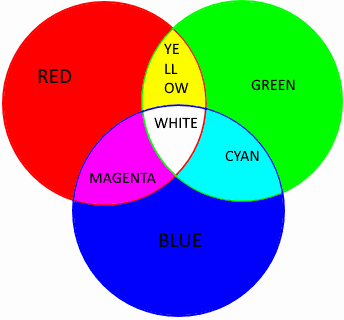This set of Video Engineering Multiple Choice Questions & Answers focuses on “Television Fundamentals – Luminance, Chrominance Signal and Picture Tubes”.
1. What is defined as the amount of light intensity as perceived by the eye regardless of the color?
a) Luminance
b) Hue
c) Saturation
d) Brightness
View Answer
Explanation: Luminance is defined as the amount of light intensity as perceived by the eye regardless of the color. A modern color TV is carefully structured to preserve all the original monochrome information and it just add on the color information on top. To do this, one signal, called luminance (Y) has been chosen to occupy the major portion (0 – 5 MHz) of the channel.
2. What is termed as the predominant spectral color of the received light?
a) Brightness
b) Saturation
c) Luminance
d) Hue or tint
View Answer
Explanation: Brightness is the overall or average intensity of illumination and it determines background light level in the reproduced picture. Hue or tint can be defined as the predominant spectral color of the received light. The color of any object is distinguished by its hue or tint.
3. Which of the following is the Grassman’s law equation?
a) Y = 0.30 × R + 0.59 × B + 0.11 × G
b) Y = 0.30 × G + 0.59 × R + 0.11 × B
c) Y = 0.30 × R + 0.59 × G + 0.11 × B
d) Y = 0.30 × B + 0.59 × G + 0.11 × R
View Answer
Explanation: To create the Y signal, the red, green and blue inputs to the Y signal must be balanced to compensate for the color perception miss balance of the eye. The governing equation is:
Y = 0.30 × R + 0.59 × G + 0.11 × B
Above equation is also known as Grassman’s law. The property of the eye of producing the response which depends on the algebraic sum of the blue, Red and Green in ports is called Grassman’s law.
4. Which color model does the following figure represent?

a) RGB
b) SRB
c) AGC
d) SSD
View Answer
Explanation: The figure shows the RGB color model. for example, in order to produce white light to the human observer, there needs to be 11% blue, 30% red and 15% green (=100%).Two signals are then created to carry the chrominance (C) information. One of these signals is called “U” and the other is called “V”.
U = R – Y
V = B – Y
5. Which is the costliest and most important part of television receiver?
a) Luminance
b) Display
c) Hue or tint
d) Picture tubes
View Answer
Explanation: The picture tube is the costliest and most important part of television receiver. The picture tube is a cathode ray tube similar to that used in a cathode ray oscilloscope. It consists of an evacuated glass bulb (funnel shaped) which has an electron gun and phosphor screen. The inside of the screen is coated with a luminescent material that produces light when electrons strike the screen.
6. A color picture tube has 2 electron guns.
a) True
b) False
View Answer
Explanation: The above statement is false. Black and white TV receiver has one electron gun and the screen with continuous phosphor coating that produces a black and white picture. A color picture tube has three electron guns in which screen are formed with vertical stripes of red, green and blue phosphors.
7. Which alloy are the electrodes generally used in picture tubes?
a) Nickel and nickel alloy
b) Nitrogen and nickel alloy
c) Carbon and iodine alloy
d) Carbon and nickel alloy
View Answer
Explanation: The neck of the picture tube contains the electron gun assembly. The electron gun assembly consists of filament, cathode, control grid, accelerating grid and a focusing anode. The electrodes in the picture tubes are generally made of Nickel and Nickel alloy, mounted on ceramic insulators or supports inside the glass neck.
8. Two pairs of deflection coils are placed at the neck of the picture tube.
a) True
b) False
View Answer
Explanation: Two pairs of deflection coils are placed at the neck of the picture tube. One pair of coils is placed at the neck of the picture tube. One pair of coil placed above and below the electron beam produces horizontal deflection. The pair of coils placed to the left and right of the beam produces vertical deflection.
9. What causes the movement of electrons in horizontal and vertical directions when current is applied to the cathode of a picture tube?
a) Magnetic and electric field
b) Transmission field
c) Magnetic field
d) Electric field
View Answer
Explanation: The deflection of beam is possible only when required current is given to horizontal and vertical pairs of coils. As soon as current is given to these coils, a magnetic field is produced which causes the movement of electrons in horizontal and vertical directions. These movements of electrons form the complete scanning raster.
Sanfoundry Global Education & Learning Series – Video Engineering.
To practice all areas of Video Engineering, here is complete set of 1000+ Multiple Choice Questions and Answers.
If you find a mistake in question / option / answer, kindly take a screenshot and email to [email protected]
